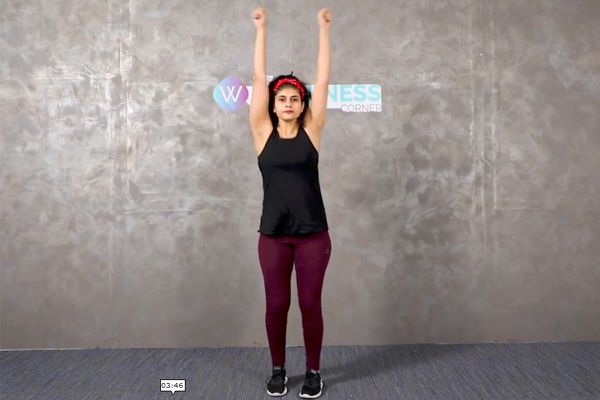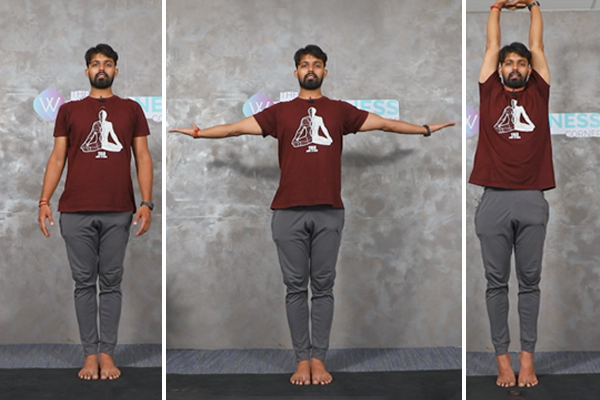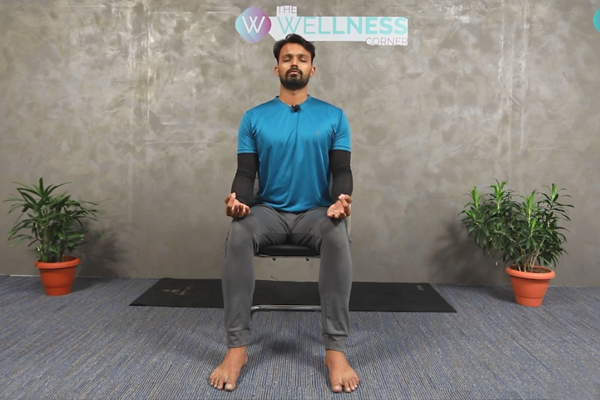COVID-19, as you already know, is a respiratory disease that can cause severe lung damage and breathing difficulties, as well as a slew of other health problems. And, as the virus spreads, you might wonder if strengthening your lungs would help you fight it if you get infected.
One of the side effects of COVID-19 is that you become short of breath, and the oxygen saturation drops. Therefore, you'll be in better shape if the lungs are in better shape. Here are a few exercises to help you get your lungs in better shape.
1. Simple Breathing Exercise
Patients with chronic lung problems are helped by respiratory therapists who use various breathing techniques and devices. However, most people without a chronic condition may clear their lungs with a basic deep breathing technique.
Here's how it's done:
- Slowly inhale deeply through your nose, allowing your belly to rise as your lungs fill and hold for a few seconds. Exhale fully.
- Repeat a few times, and then force yourself to cough so that any secretions are brought to the surface. If there are people around, it is recommended that you wear a mask.
If you don't exercise, the secretions in the gravity-dependent parts of your lungs will build up, increasing the risk of pneumonia and infection. It's an easy thing you can do to help your lungs.
You may also like: 4 Ways to Increase Oxygen Level in Covid Patients at Home

2. Aerobic Exercise

Since lung function declines with age, staying active is particularly important for the elderly. The muscles that sustain your breathing weaken over time, lung tissues lose elasticity, and the sacs within your lungs expand. Exercising has been shown in studies to help slow down the aging process and improve lung function.
Aerobic exercise, such as fast walking, running, or swimming, allows oxygen to reach the deepest parts of your lungs, which are not used while sedentary. If you've breathed in any secretions or pollutants, aerobic exercises will help you clear them out of the lungs, lowering your risk of infection or pneumonia.
Aerobic exercise also aids the body in obtaining oxygen from the atmosphere and using it to its full potential. If you get COVID-19 and cannot receive corona vaccines but have been exercising regularly, this will benefit you.
3. Breathing With A Pursed-Lip

Normal breathing can't bring as much oxygen into the lungs as pursed-lip breathing can. It also reduces the number of breaths you take per minute, which holds the airways open for longer. The steps below will teach you how to pursue deep breathing.
- Relax the neck and shoulder muscles by sitting in a comfortable position.
- Inhale slowly through your nose for several counts while closing your mouth. Breathing through your mouth does not warm and humidify the air until it enters the lungs while breathing through your nose does.
- Purse your lips as though you were about to blow out a candle before exhaling.
- Breathe out all the air in your lungs steadily while keeping your lips pursed.
- Exhale for a more prolonged period than you inhaled.
- Rep the process many times.
You may also like: Six Minute Walk Test Practice Guide For COVID-19
4. Breathing With The Diaphragm

It is advisable to begin by breathing in through your nose, as you did with the pursed breathing. Keep an eye on how your stomach fills up with air. It would be best if you place your hands gently on your stomach or a tissue box on top of it to be mindful of your abdomen rising and dropping.
Exhale for at least two to three times as long as you inhale from your neck and shoulders. Relax your neck and shoulders as you retrain your diaphragm to assist in the filling and emptying of your lungs.
5. Windmill Breathing

The steps below will teach you how to do windmill breathing correctly.
- Exhale and calm your body by standing with your feet and toes together.
- Begin by inhaling deeply while raising your arms to the side and upward. Inhale until your arms are overhead and you're standing on your toes.
- Standing with the feet and toes together is a good idea.
It is suggested that you take ten deep breaths three times a day.
You may also like: How to Get Your Smell and Taste Back After COVID-19?
6. Breathing From The Lower Ribs

It is recommended that you follow the steps below to be able to complete this exercise.
- Sit tall in a chair Bring your hands on the knees, open your palm facing upward and make gyan mudra.
- Inhale deeply and concentrate on extending just the lower half of your rib cage.
- Repeat for an exhale.
- Hold your shoulders relaxed at all times.
It is recommended that you take ten deep breaths three times a day.
7. Breathing Deeply
Deep breathing, like any other type of exercise, works because it facilitates muscle contraction and expansion. COVID-19 patients can find relief from this by increasing their lung capacity. Health practitioners prescribe a variety of deep breathing exercises. Controlled breathing is the most basic form, including taking a series of deep breaths and holding them. 4-7-8 is a more challenging exercise that allows the patient to breathe in a while, counting four and keep while counting to eight. This takes no time, needs no equipment, and is highly affordable.
Conclusion:
It is advisable that you keep hydrated, track your symptoms, and report them to a doctor, just as you would for any other infection. It is not advised to self-manage with these breathing exercises alone; in the case of COVID-19 illness, using proven and recommended corona vaccines in conjunction with these exercises can ensure the best possible recovery. Get an RT-PCR test @ home with our The Wellness Corner app if feeling COVID-19 like symptoms.










